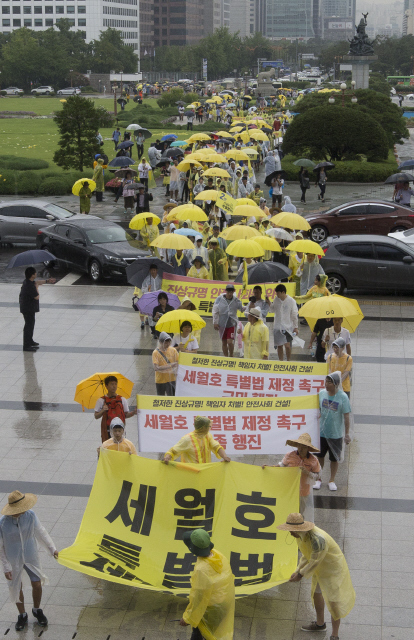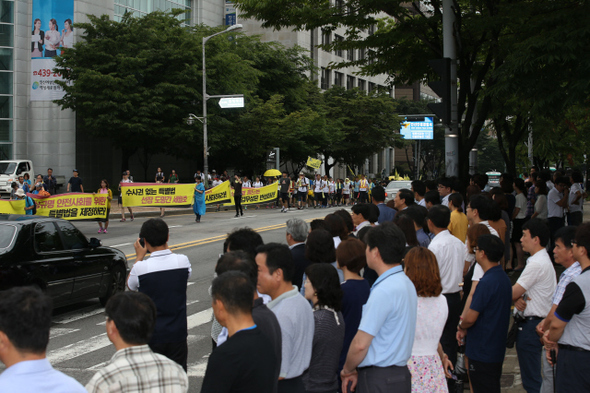 |
Families marching, hoping for enactment of special law, which is currently held up in parliament
By Kim Gi-seong, south Gyeonggi correspondent and Park Ki-yong, staff reporter, in Ansan “No matter how long the tears flow, the ice in my heart doesn’t melt because no one is taking responsibility for the moment when the children slipped beneath the waves. We have determined to do more than just cry.” Because of the government and National Assembly, which are still refusing to answer calls to carry out an honest investigation of the Sewol ferry sinking 100 days after it occurred, the families of the victims have begun another march of tears. It was 9 am on July 23, and heavy raindrops were falling intermittently. The families of those who perished in the sinking of the Sewol were assembled at the official government memorial altar at the Hwarang Resort in Ansan, Gyeonggi Province. “We are setting out on this march because we cannot remain silent in a society in which the door of truth is locked, a society with no emergency exit,” someone said, reading a document announcing the beginning of the 100-Li (about 40km) March Calling for the Legislation of the Special Act on the 100th Day since the Sewol Tragedy. |
Family members of those lost and still missing from the Sewol tragedy march toward Ansan City Hall in Gyeonggi Province calling for the legislation of the special Sewol Law, July 23. The march went from Ansan to Seoul City Hall and Gwanghwamun Square on the evening of July 24. (by Ryu Woo-jong, staff photographer) |






 We Want The Truth of The Sewol Ferry Tragedy
We Want The Truth of The Sewol Ferry Tragedy
